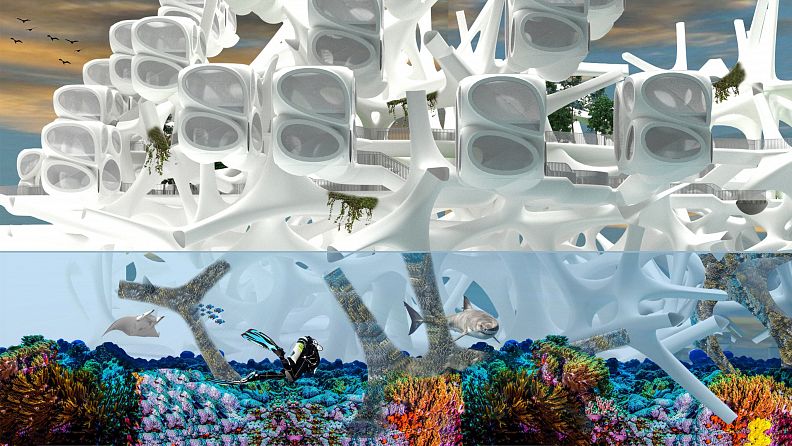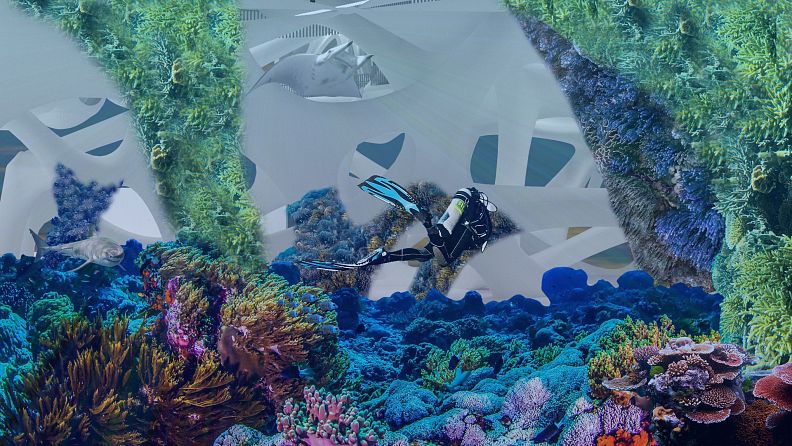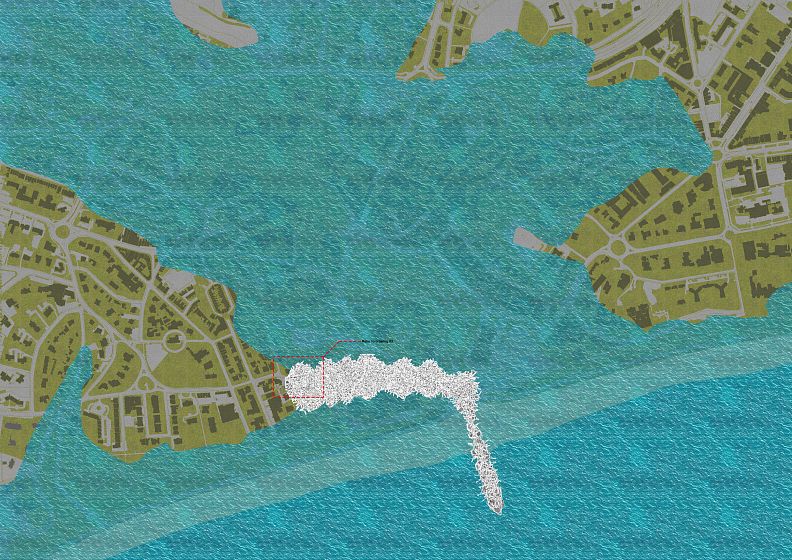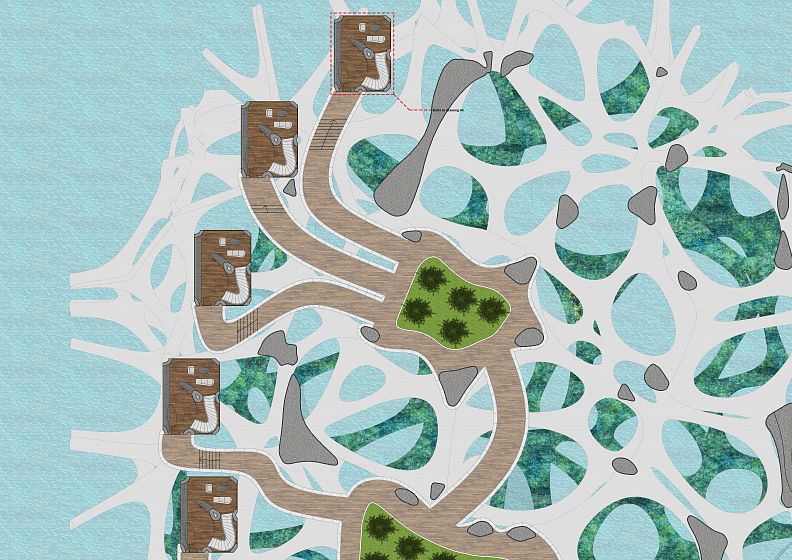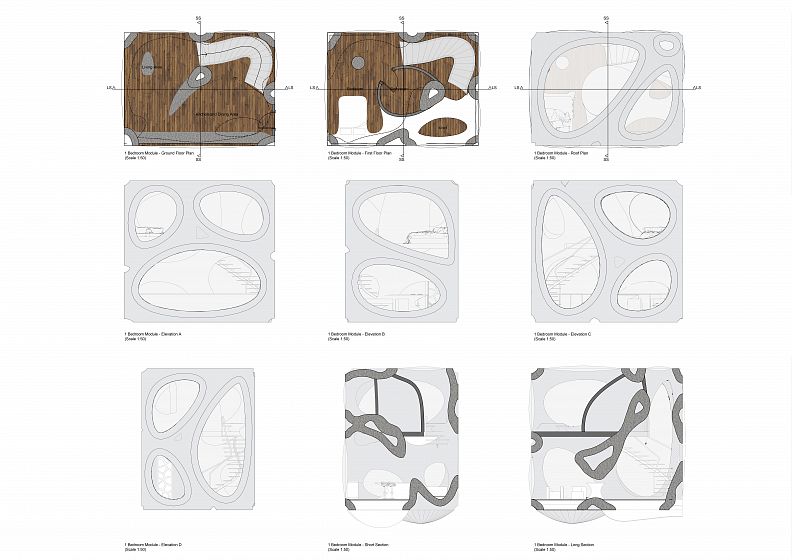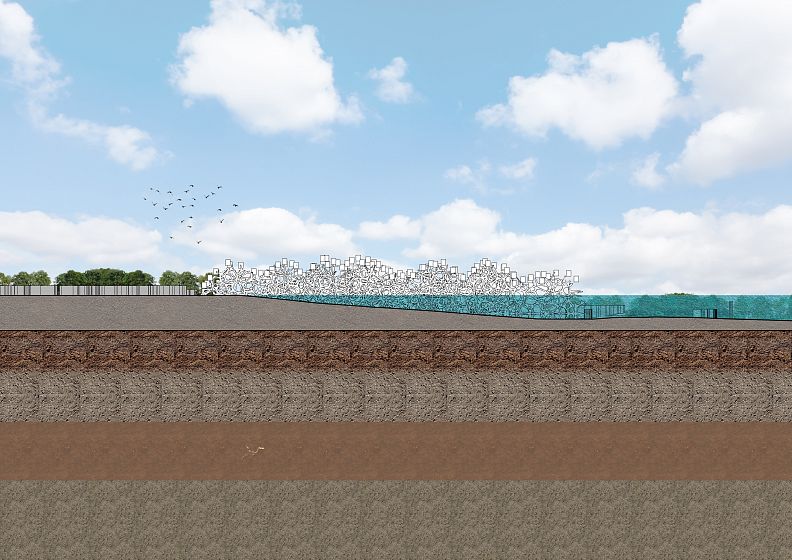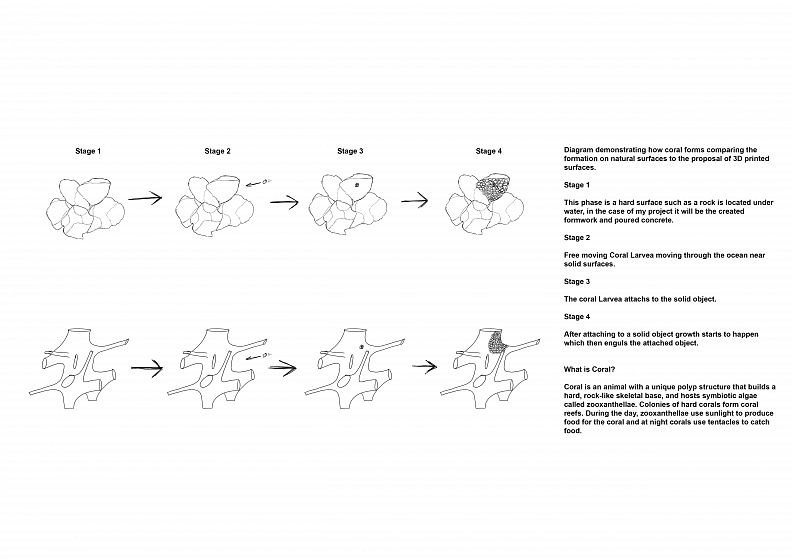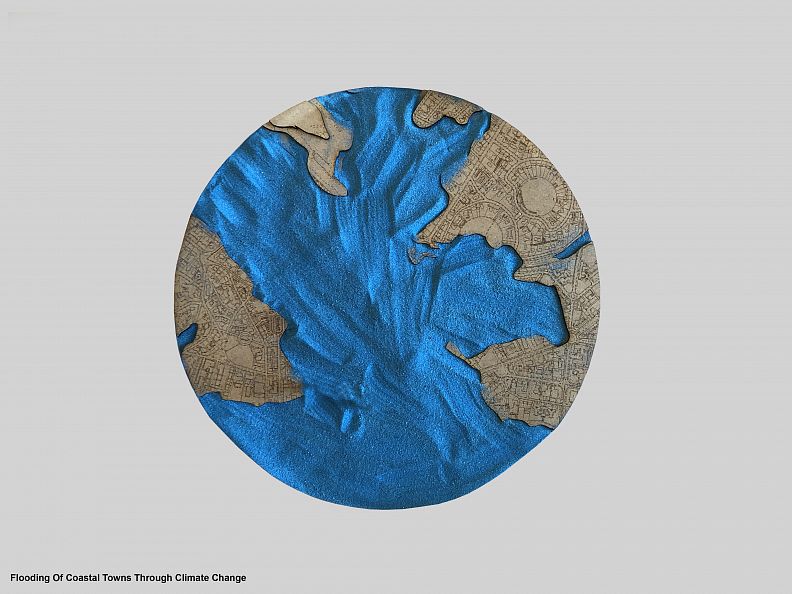Marine Symbiosis

Project idea
Marine Symbiosis is the idea of Humans and Marine life living in harmony after the devastating impacts of global climate change. Based in Bournemouth on the south coast of England this project looks at how coastlines will change over time along with society. The idea creates a study of Bournemouth looking at various aspects of data which range from land levels to population density. This data is then used to construct an algorithm to generate a path for my design. This idea behind this path was to create a structure that will house humans while also having a positive impact on marine life to create a new environment for them to thrive in this new age of climate change. The path it takes follows the line of Bournemouth pier than then grows up the hillside on the best possible path to keep the furthest point in contact with land above the rising water line while enable coral growth to grow below the water. This structure is ever growing based on a modular panelling design i developed using computer aided design enabling it to continually grow. Made from fully recycled materials the form work would be created from recycled ocean plastics that have been harming the oceans for years now giving the opportunity to give back, while a concrete infill is created from the debris of building which happened when rioting pursued after the collapse of society, creating a new society from the ashes of our old one.
Project description
Based in the distant future marine symbiosis is a reaction to a chain of global events that have led to the collapse of modern society. With climate change drastically altering the face of the world, humanity couldn’t cope, from mass migration to financial collapse the world as we know it has changed forever. In the aftermath settlements no longer exist due to mass rioting that proceeded the collapse, allowing for a new style of settlement to rise.
Mass migration of marine life occurred due to climate change, causing the British Isles to become a sustainable environment for exotic life.
Plastics in the ocean have been removed then recycled to create the form work of the structure that is designed to allow coral larvae to cling to, creating a new marine environment to develop over time, this allows the plastic that once caused nothing but negative impact on the environment to give back, creating a positive sustainable environment for marine life the thrive. While the form work is filled with concrete created from the debris of the destroyed buildings that happened during the rioting, bringing the materials full cycle to create a new society from the ashes of our old one.
Technical information
The structure is built using recycled ocean plastic that is 3D printed into panels that were calculated using computational design with them being infilled with concrete created from recycled debris of buildings.
The form work allows for coral to grow below water while nature can grow above water, with the coral creating a more sustainable environment for marine life while planting and vegetation growth above water will then generate a new Bournemouth gardens that will be lost to the rising sea levels.
Each pod system is connected through a bridge network that connects to central landscaped areas which are for communal use. The pod services are carried out through an opening underneath that is connected to the underside of each bridge back to the central landscaped areas, these networks are then appropriately diverted to corresponding locations such as a sewage plant, data network points, or by drawing water up from the ocean and converting it into drinking water.
